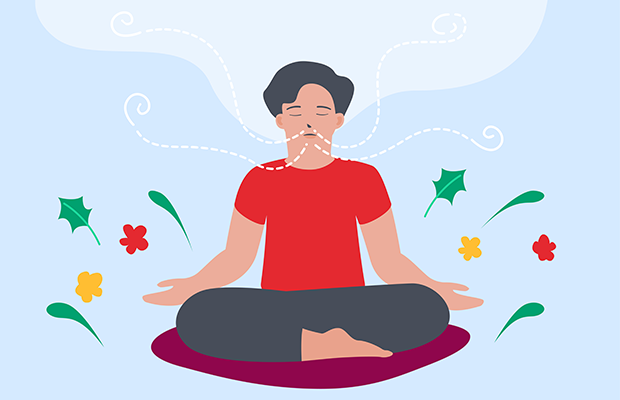
Introduction
In today's fast-paced and chaotic world, finding inner peace has become more crucial than ever. Inner peace is a state of emotional and mental calmness, free from stress, anxiety, and negative thoughts. It is a state of being centered, grounded, and content with oneself and the world around. Cultivating inner peace through meditation and mindfulness practices can have a profound impact on our mental, emotional, and physical well-being. In this article, we will explore the significance of inner peace, the connection between meditation and inner peace, different types of meditation techniques, tips for getting started with meditation, and strategies for incorporating mindfulness into daily life.
What is Inner Peace?
Inner peace is often considered the key to leading a healthier, happier, and more fulfilling life. It involves finding a sense of balance and harmony within oneself, despite external circumstances. In today's busy and stressful world, inner peace can be elusive, but it is essential for overall well-being. Research has shown that individuals who experience inner peace are less likely to suffer from stress-related illnesses, anxiety, and depression. They have higher levels of resilience, emotional intelligence, and overall life satisfaction.
The Connection Between Meditation and Inner Peace
Meditation is a powerful tool for cultivating inner peace. It involves training the mind to focus and redirect thoughts, ultimately leading to a state of deep relaxation and heightened awareness. By practicing meditation regularly, individuals can learn to quiet the mind, cultivate self-awareness, and develop a sense of inner calm. Mindfulness, a core component of meditation, involves paying attention to the present moment without judgment. It allows individuals to observe their thoughts and emotions without getting caught up in them, leading to greater clarity, insight, and inner peace.
Getting Started with Meditation
If you are new to meditation, getting started can seem overwhelming. However, it is essential to remember that meditation is a practice that evolves over time. To begin your meditation practice, find a quiet and comfortable space where you won't be disturbed. Sit in a relaxed posture, close your eyes, and focus on your breath or a mantra. Allow thoughts to come and go without judgment. Start with just a few minutes each day and gradually increase the duration as you become more comfortable with the practice.
Types of Meditation Techniques
There are various meditation techniques that can help you cultivate inner peace. Mindfulness meditation, which involves focusing on the present moment, is one of the most popular forms of meditation. Loving-kindness meditation focuses on cultivating feelings of compassion and goodwill towards oneself and others. Transcendental meditation involves repeating a mantra to induce a state of deep relaxation and transcendental awareness. Each type of meditation offers unique benefits and can be tailored to individual preferences and needs.
Incorporating Mindfulness into Daily Life
In addition to formal meditation practices, mindfulness can be integrated into daily activities to enhance overall well-being. Mindful eating involves paying attention to the flavors, textures, and sensations of each bite of food. Mindful walking focuses on being present and aware of each step taken. Mindful communication involves listening attentively and responding thoughtfully in conversations. By practicing mindfulness throughout the day, individuals can cultivate a greater sense of awareness, presence, and inner peace.

Overcoming Challenges in Meditation and Mindfulness
As with any new practice, meditation and mindfulness can present challenges. A restless mind, lack of time, and self-doubt are common obstacles that individuals may encounter. To overcome these challenges, it is essential to be patient, compassionate, and consistent in your practice. Set realistic goals, seek support from meditation teachers or peers, and celebrate small victories along the way. Remember that the journey towards inner peace is unique to each individual and may require time and effort to achieve.
Maintaining Inner Peace in Stressful Situations
Maintaining inner peace during stressful situations can be particularly challenging. However, there are various techniques that can help you stay calm and centered. Deep breathing, visualization, and positive affirmations can all be effective tools for managing stress and anxiety. By practicing these techniques regularly, individuals can develop a sense of inner resilience and emotional balance, even in the face of adversity.

The Benefits of Cultivating Inner Peace
Cultivating inner peace through meditation and mindfulness practices offers a wide range of benefits for mental, emotional, and physical well-being. Reduced stress and anxiety, improved focus and concentration, better emotional regulation, and an overall sense of well-being are just a few of the many benefits associated with inner peace. By making inner peace a priority in your life, you can experience greater happiness, resilience, and fulfillment in all areas of your life.
Conclusion
In conclusion, cultivating inner peace through meditation and mindfulness practices is a transformative journey that can lead to a healthier, happier, and more fulfilling life. By taking the time to quiet the mind, cultivate self-awareness, and practice presence in daily activities, individuals can develop a deep sense of inner calm and contentment. Regardless of your level of experience with meditation and mindfulness, it is never too late to begin your journey towards inner peace. Remember that inner peace is not a destination but a continuous process of self-discovery and growth. Start your meditation practice today and experience the profound benefits of inner peace in your life.
FAQs
Q: What is inner peace and why is it important?
A: Inner peace is a state of emotional and mental calmness, free from stress and negative thoughts. It is important for overall well-being as it can lead to reduced stress, anxiety, and greater resilience.
Q: How can meditation help in cultivating inner peace?
A: Meditation trains the mind to focus, quietens thoughts, and enhances self-awareness, leading to a state of deep relaxation and inner calm.
Q: What are some popular types of meditation techniques for inner peace?
A: Mindfulness meditation, loving-kindness meditation, and transcendental meditation are some popular techniques that can help cultivate inner peace.
Q: How can mindfulness be integrated into daily life for inner peace?
A: Mindfulness can be incorporated into daily activities like eating, walking, and communication to enhance awareness, presence, and inner peace.
Q: How can one overcome challenges in meditation and mindfulness practices?
A: Being patient, setting realistic goals, seeking support, and celebrating progress can help individuals overcome challenges in meditation and mindfulness.
Q: What are some techniques for maintaining inner peace in stressful situations?
A: Deep breathing, visualization, positive affirmations, and regular practice of stress-management techniques can help maintain inner peace during stressful situations.
Q: What are the benefits of cultivating inner peace through meditation and mindfulness?
A: Benefits include reduced stress and anxiety, improved focus and emotional regulation, and an overall sense of well-being, leading to greater happiness, resilience, and fulfillment.


0 Comments